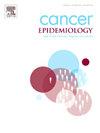The impact of the COVID-19 pandemic on the use of systemic therapy for patients diagnosed with cancer in England: A population-based study with a focus on breast and lung cancer
IF 2.3
3区 医学
Q3 ONCOLOGY
引用次数: 0
Abstract
Background
The COVID-19 pandemic caused substantial disruption to the delivery of cancer treatment. We aimed to describe the impact on the use of systemic anti-cancer therapy (SACT) in England with a focus on the treatment of breast and lung cancer.
Methods
We identified patients newly diagnosed with cancer between January 2019 and December 2020 from the National Cancer Registration Dataset. We describe the changes in the number and stage distribution of patients, and the proportion receiving SACT within 12 months of diagnosis of breast and lung cancer.
Results
An estimated 7704 fewer breast cancer patients and 2286 fewer lung cancer patients were newly diagnosed in 2020 compared to 2019. This was concordant with a reduction in the number of SACT administrations delivered within 12 months post-diagnosis. However, an increased proportion received SACT from April to December 2020 for patients diagnosed with breast cancer, which was not seen for lung cancer patients.
Conclusions
Changes in the delivery of SACT were largely driven by a reduction in the number of patients who were diagnosed with cancer in 2020. An increased proportion of breast cancer patients treated with SACT likely reflects the increased proportion of patients who were diagnosed with stage III and stage IV disease.
COVID-19大流行对英国癌症患者使用全身治疗的影响:一项以乳腺癌和肺癌为重点的基于人群的研究
2019冠状病毒病大流行对癌症治疗的提供造成了严重干扰。我们的目的是描述对英国使用系统性抗癌治疗(SACT)的影响,重点是乳腺癌和肺癌的治疗。方法:我们从国家癌症登记数据集中确定2019年1月至2020年12月期间新诊断为癌症的患者。我们描述了患者数量和分期分布的变化,以及乳腺癌和肺癌诊断后12个月内接受SACT的比例。结果与2019年相比,2020年新诊断的乳腺癌患者减少7704例,肺癌患者减少2286例。这与诊断后12个月内SACT用药次数的减少是一致的。然而,在2020年4月至12月期间,乳腺癌患者接受SACT治疗的比例有所增加,而肺癌患者则没有这种情况。SACT交付量的变化主要是由2020年被诊断为癌症的患者数量减少所驱动的。接受SACT治疗的乳腺癌患者比例的增加可能反映了诊断为III期和IV期疾病的患者比例的增加。
本文章由计算机程序翻译,如有差异,请以英文原文为准。
求助全文
约1分钟内获得全文
求助全文
来源期刊

Cancer Epidemiology
医学-肿瘤学
CiteScore
4.50
自引率
3.80%
发文量
200
审稿时长
39 days
期刊介绍:
Cancer Epidemiology is dedicated to increasing understanding about cancer causes, prevention and control. The scope of the journal embraces all aspects of cancer epidemiology including:
• Descriptive epidemiology
• Studies of risk factors for disease initiation, development and prognosis
• Screening and early detection
• Prevention and control
• Methodological issues
The journal publishes original research articles (full length and short reports), systematic reviews and meta-analyses, editorials, commentaries and letters to the editor commenting on previously published research.
 求助内容:
求助内容: 应助结果提醒方式:
应助结果提醒方式:


